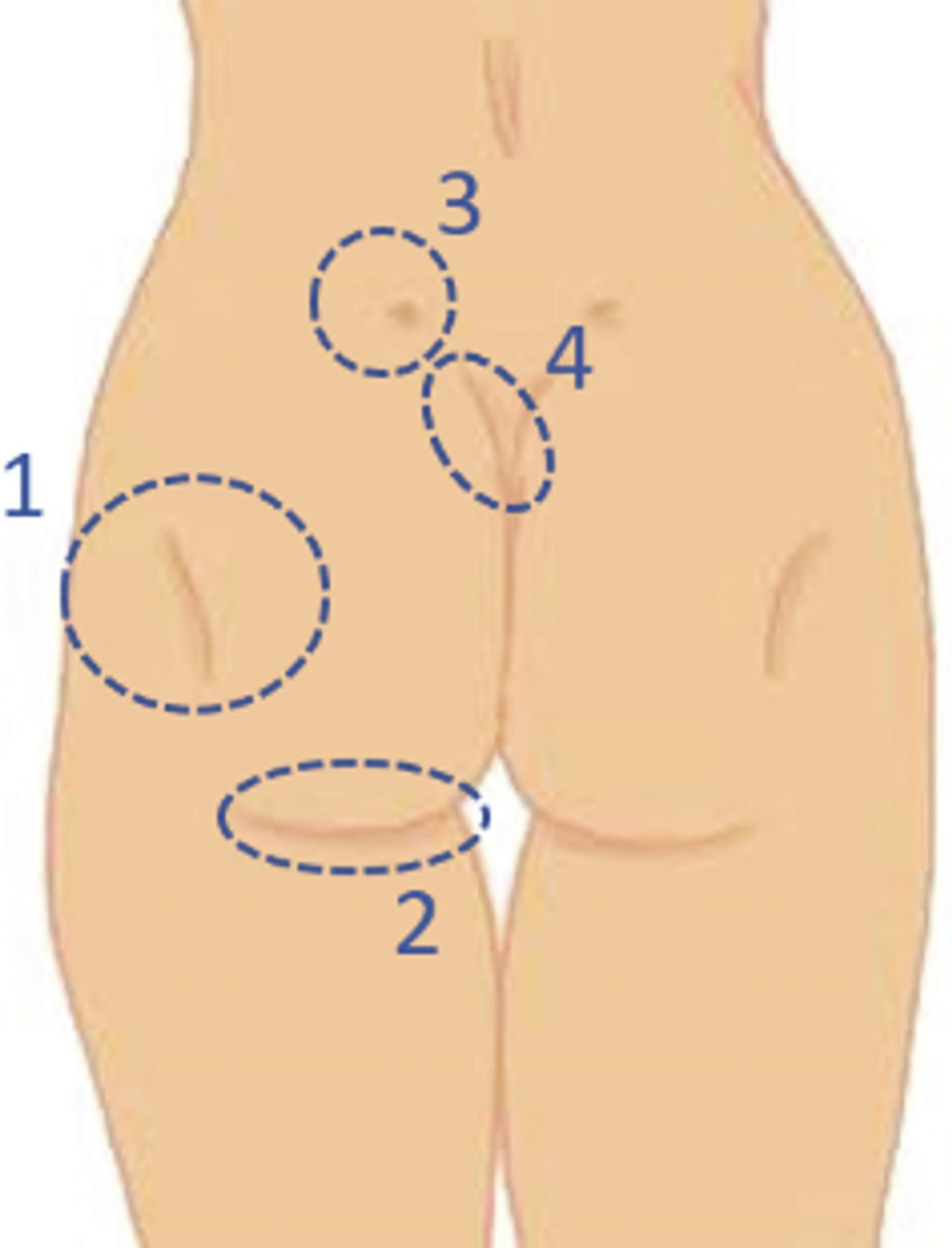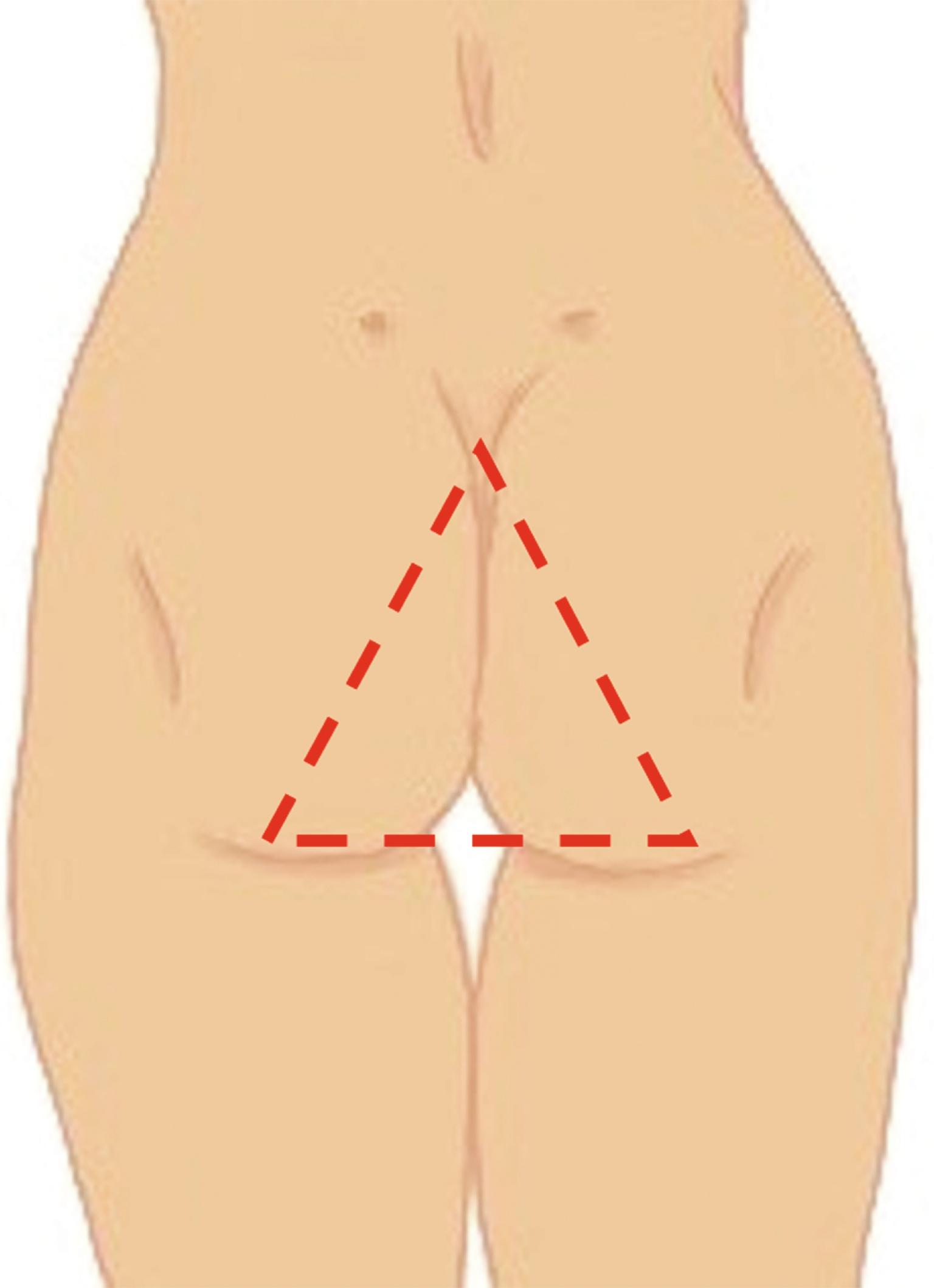Physical Address
304 North Cardinal St.
Dorchester Center, MA 02124
A female body shape with a small waist and round buttocks is considered as the most attractive.
Autologous fat grafting is the gold standard for volumizing the gluteal area.
Collagen biostimulator injection into the gluteal area is indicated to correct postoperative irregularities, contour, cellulite, stretch marks, and sagging skin.
The buttocks are important in sexual attraction and in the concept of body beauty for most cultures and ethnic groups. A female body shape with small waist and round buttocks is considered as the most attractive. The “universally beautiful” gluteal contour is symmetrical, rounded, with greater volume and projection between its middle and upper thirds, the latter being considered the main attribute for the buttocks’ attractiveness. The transition between the lumbosacral area and the waist must be smooth. The infragluteal fold must be minimal and should not laterally surpass the posterior midline of the thighs. In the lateral view, the gluteal contour is like a smooth “C,” with no depressions. The skin should have homogeneous color and be smooth, without surface irregularities, like cellulite, striae, scars, or wrinkling/sagging. Box 29.1 describes the main gluteal beauty-related aesthetic references ( Fig. 29.1 ).
Lateral depressions: cavities formed in the region lateral.
Infragluteal fold: the groove under the ischial tuberosity.
Supragluteal fossettes: two cavities located on each side of the medial sacral crest.
Waist–hip ratio: ideally between 0.6 and 0.7.
Triangle or V-shaped fold: the sulcus formed by two lines originating in the gluteal crease and directed to the supragluteal fossettes.

The aging and menopause processes progress with changes of the subcutaneous fat distribution—accumulation in the waist and reduction in the trochanteric area, sagging skin, muscular fascia relaxation, and sarcopenia, resulting in intergluteal fold elongation, infragluteal fold drop and elongation, flattening of the areas on the ischial tuberosities, and greater projection of the lower third, giving an old, ptotic appearance to buttocks.
The demand for procedures in the gluteal area is growing. The main motivations are volume augmentation and projection, correction of asymmetries, stretch marks, cellulite, and sagging skin.
Autologous fat grafting is considered the gold standard for volumizing the gluteal area. The advantages of autologous fat are relative abundance, low immunogenicity, natural appearance, ease of symmetry, and absence of the complications related to silicone implants.
For patient selection, the following should be considered: presence of fat (20%–30% of fat or body mass index [BMI] between 20 and 30 kg/m 2 ), excessive skin (absent or a low degree of ptosis), and body shape (the squared or “V” shapes anticipate lower results than those for patients with “A” or rounded shapes).
There is no standard process accepted as the best to fat collection and processing. The donor areas are usually those close to the gluteal area. A systematic review showed the following: liposuction alone with a vacuum machine (40%), associated with a syringe (26.7%), syringe alone (20%), and liposuction with ultrasound (6.7%). The most used fat processing techniques were decantation (58%), high- or low-speed centrifugation (21%), and washing (16%).
Incisions in the infragluteal area should be avoided. Typically, fat should be injected into the superficial planes in the upper mid and lateral buttock regions to promote elevation and contribute to the hourglass figure. The danger area should be avoided: it contains the main neurovascular structures ( Fig. 29.2 ).

There is no consensus on the safe amount of fat to be injected, although studies suggest 400 to 550 mL per gluteus per session. The procedure must be stopped before whitening skin or fat leakage through the incision are observed. Safety recommendations suggested are subcutaneous fat grafting only, avoiding muscular injections; the use of thicker cannulas 4 mm or larger, avoid the use of lidocaine in the locally infiltrated solution when under general or locoregional anesthesia (risk of systemic toxicity).
The main safety recommendation is to inject fat in the subcutaneous plane ONLY.
Stop fat injection:
Skin whitening
Fat leakage through the incision
Become a Clinical Tree membership for Full access and enjoy Unlimited articles
If you are a member. Log in here